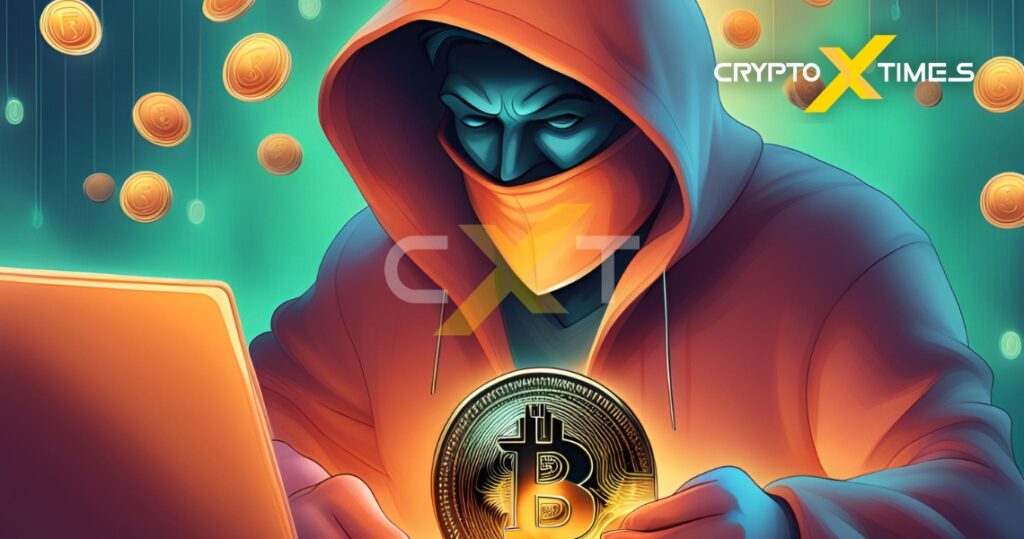DeFi is short for “decentralized finance.” It includes a range of financial apps in cryptocurrency and blockchain. They aim to disrupt traditional financial middlemen.
DeFi is inspired by blockchain technology, which underpins digital currencies like Bitcoin. This technology allows multiple entities to hold a copy of the transaction history, ensuring no central authority controls it.
This decentralization is vital because centralized systems and human gatekeepers can slow down transactions, reduce sophistication, and limit users’ direct control over their funds. DeFi stands out by extending blockchain from simple value transfer to more complex financial applications.
Bitcoin and many other digital assets differ from Visa, PayPal, and other traditional digital payment methods. They don’t use middlemen in transactions.

A financial institution stands between the buyer and the business. It controls the transaction when a credit card is used for coffee at a cafe. On its own, it can stop or pause it and write it down in its notebook. When you use cryptocurrency, these organizations are not involved.
Decentralized Finance is an unbundling of traditional finance, DEFI takes the key elements of the works done by banks, exchanges, and insurers today — like lending, borrowing, and trading puts it in the hands of regular people.
Rafael Cosman, CEO and co-founder of TrustTokenRemoving intermediaries is a great idea for more than just straight purchases. Major companies usually monitor financial apps like loans, insurance, crowdfunding, swaps, and betting. One of the best things about decentralized finance is that it eliminates middlemen from many deals.
How does DeFi work?
Ethereum is a flexible blockchain used to create smart contracts, the basis of most decentralized finance apps. A smart contract is a computer program that follows certain rules and runs when they are met.
To show, let’s pretend we borrowed $100 worth of cryptocurrency. You would visit a DeFi loan site and lay another cryptocurrency—say $150 worth of Ethereum—as collateral.
The lending system holds Your Ethereum in a smart contract, which gives you the loan. If you pay back the $100 plus interest by the due date, this smart contract will return your Ether deposit immediately.
The smart contract will keep your deposit if you don’t pay it back. Since the whole process is automatic, there is no need for a person to act as a middleman, like a bank.
What are the most popular types of DeFi?
According to the CoinMarketCap data, Ethereum is the world’s second-largest cryptocurrency platform and the hub for most decentralized finance (DeFi) apps. Unlike Bitcoin, Ethereum is not merely a transaction platform. It offers broader use, allowing for various decentralized applications.
Vitalik Buterin, who created Ethereum, wrote the first white paper in 2013, discussing its potential use in complicated financial situations.
Ethereum’s flexibility is due to its smart contract platform, which lets transactions happen automatically when certain conditions are met. Programming languages on Ethereum, like Solidity, are designed to create and use smart contracts.
Many decentralized finance apps work on Ethereum via smart contracts. The upcoming Ethereum 2.0 upgrade will boost these apps by fixing their scalability issues.
Let’s have a look at the most popular types of DeFi:
1. Decentralized exchanges (DEXs)
On these websites, people can sell one currency for another, like US dollars for Bitcoin or ether for DAI. DEXs are becoming increasingly popular because they let people trade cryptocurrencies directly with each other without having to go through a third party.

2. Stablecoins
To keep their prices fixed, these cryptocurrencies are linked to something that isn’t a cryptocurrency, like the U.S. dollar or the euro.
3. Lending platforms
These platforms eliminate the need for standard middlemen like banks in the lending process with smart contracts.
4. “Wrapped” bitcoins (WBTC)
Bitcoin can be sent to the Ethereum network and used in Ethereum’s DeFi ecosystem. WBTCs let people lend their Bitcoin to others through decentralized lending platforms and take an interest in it.
5. Prediction markets
These are venues for betting on the results of upcoming events, such as elections. DeFi-based prediction markets seek to offer features akin to conventional ones without middlemen.
What are Defi concepts?
Here are some new DeFi concepts that have emerged alongside various applications:
1. Yield farming
This plan is for seasoned traders who are ready to accept risk. Users search among several DeFi tokens for opportunities with higher returns.
2. Liquidity mining
Decentralized finance apps offer free tokens to draw users to their systems. This is now the most often used kind of yield farming.
3. Composability
The code for DeFi apps is open source, meaning anyone can see it. This means writers can use the code to make new apps.
4. Money Legos
Like Legos, toy blocks can create different constructions, and DeFi apps help one grasp “composability.” Like “money Legos,” DeFi apps can be merged to create fresh financial products.
Pros of DeFi
Decentralized Finance (DeFi) offers several benefits over the traditional financial system:
Accessibility: Decentralized finance is open to anyone with an internet link, while banks require an application and approval.
Privacy: Users can keep their names safe because DeFi apps don’t need to verify users’ identities in real life.
Compatibility: Most DeFi apps are made to work with other apps, so assets and data can move easily between systems.
Transaction Speed: When you use DeFi, transactions usually settle within minutes, while traditional banking methods can take days.
Lower Fees: DeFi usually charges less than banks because it doesn’t need middlemen.
Cons of DeFi
Decentralized finance is still a developing technology with certain hazards, even if there are several convincing reasons to use it:
Hacking: Millions of attacks annually mean hacking is still a continual concern. Many DeFi systems are open-source, meaning anyone—including those with sinister goals may see the code. Still, adopting basic safety precautions while making transactions will help to lower this danger greatly.

Limited Regulatory Control: The low regulatory control in decentralized finance is a benefit since it reflects the fundamental idea of cryptocurrencies: moving financial power from authorities to distributed groups and individuals. Still, this lack of control also results in less user protection.
Risky for newcomers: The DeFi ecosystem can intimidate new players because of its particular words and language. Though learning this new system can be difficult, anyone can rapidly come up to speed on decentralized finance using thousands of free online tools.
High Volatility: High volatility in crypto prices might result in significant losses. Even stablecoins, designed to lower risk, have occasionally lost their peg.







